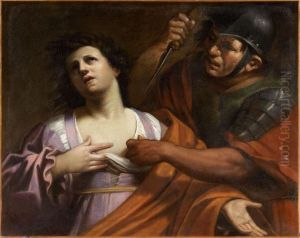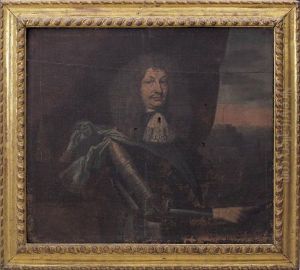Gennari Benedetto Paintings
Benedetto Gennari was an Italian Baroque painter who was born on October 19, 1633, in Cento, a town in the Emilia-Romagna region of Italy. He was part of a family of artists: his father was the painter Ercole Gennari, and his uncle was the well-known Baroque painter Guercino, also known as Giovanni Francesco Barbieri. Benedetto was, in fact, Guercino's most important pupil and collaborator. After his father's death in 1658, Benedetto moved to Bologna to live with his uncle, who had a significant influence on his style and technique.
Benedetto Gennari's career was marked by his close association with Guercino, and he became an integral part of his uncle's workshop, learning the craft and contributing to various projects. He was known for his skill in portraiture, religious compositions, and mythological scenes. After Guercino's death in 1666, Benedetto and his brother Cesare took over the workshop and continued the artistic legacy.
In 1672, Benedetto Gennari's career took an international turn when he moved to Paris, and later to England, where he worked for Charles II. In England, he became a court painter, and his work was characterized by the Baroque style with a softer, more refined approach influenced by the French and Flemish traditions. He painted numerous portraits of the English aristocracy as well as religious subjects.
Gennari returned to Italy in 1688, where he continued to work and contribute to the art scene in Bologna until his death on December 9, 1715. During his later years, he also served as a conservator of the Accademia Clementina, an institution dedicated to the arts. His works are now part of various collections in Italy and across Europe, reflecting the cross-cultural influences and the Baroque sensibilities of the 17th century.

